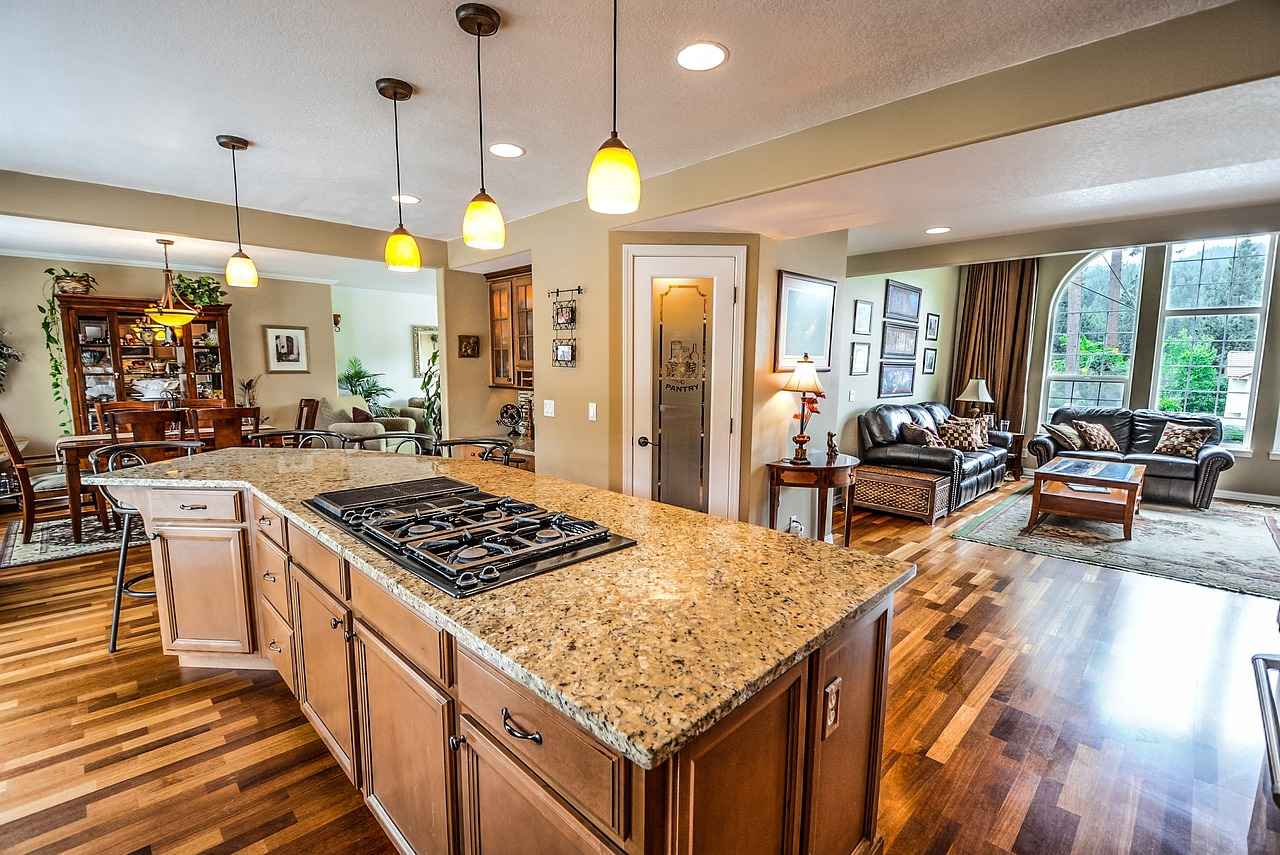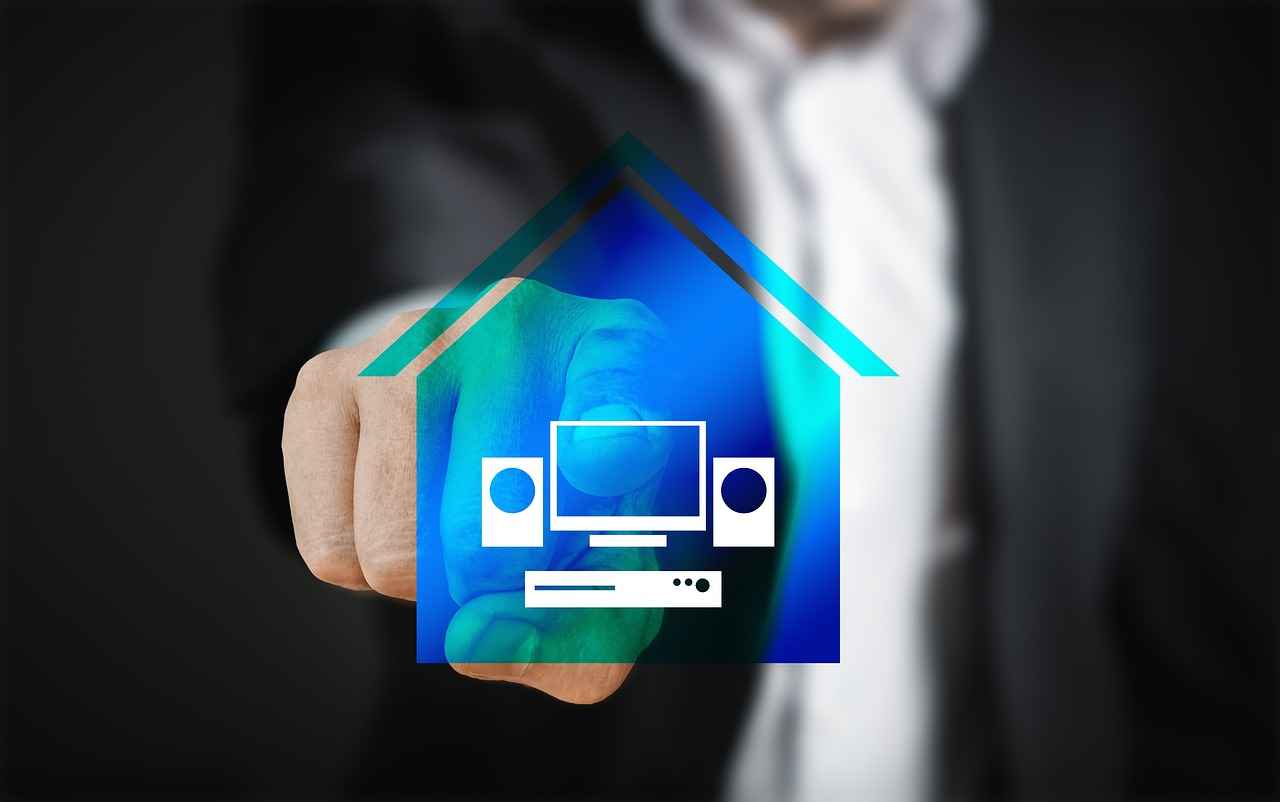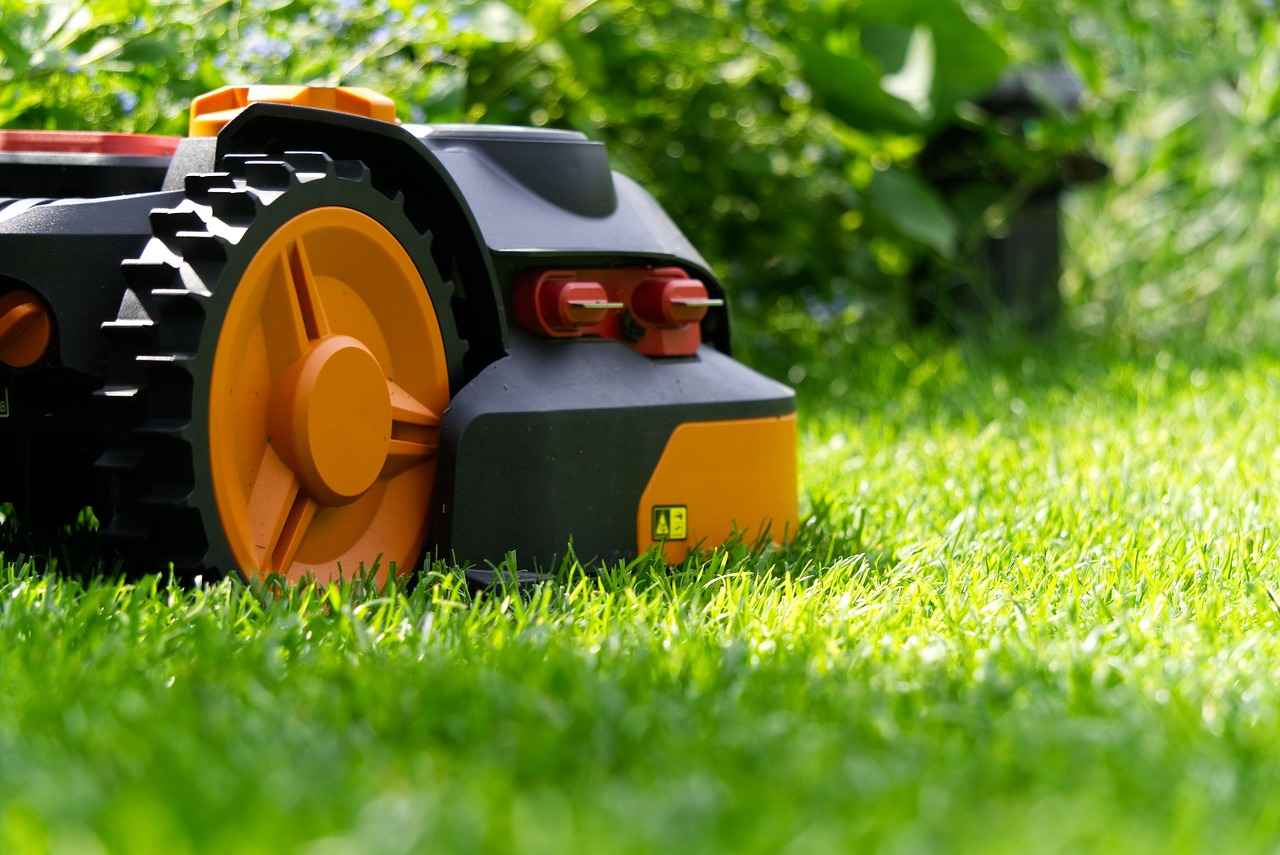This article delves into effective strategies for integrating smart home devices, ensuring they communicate efficiently for enhanced convenience and automation. Discover tips, tools, and techniques to create a cohesive smart ecosystem.
Understanding Smart Home Ecosystems
A smart home ecosystem comprises interconnected devices that communicate through various networks. Understanding these systems is crucial for seamless integration and maximizing functionality.
Choosing the Right Hub
Selecting the appropriate smart home hub is vital for device compatibility. A hub acts as a central controller, enabling various devices to work together efficiently.
- Popular Smart Home Hubs: Some of the most renowned smart home hubs include Amazon Echo, Google Nest Hub, and Samsung SmartThings. Each offers unique features tailored to different user needs.
Comparing Hub Performance
Evaluating the performance of different hubs can help users make informed decisions. Factors to consider include response time, device compatibility, and ease of use.
Device Compatibility and Standards
Ensuring device compatibility is essential for a seamless smart home experience. Familiarize yourself with common communication standards like Zigbee, Z-Wave, and Wi-Fi.
- Zigbee vs. Z-Wave: Understanding their differences can help users choose the right devices for their needs.
- Wi-Fi Devices: Wi-Fi-enabled devices offer easy installation and widespread compatibility, though they may require more bandwidth.
Creating Automation Routines
Automation routines enhance the functionality of smart home devices. Users can create schedules and triggers for devices to operate automatically, improving efficiency.
- Examples of Automation: Common automation examples include setting lights to turn on at sunset or programming thermostats to adjust based on occupancy.
- Using IFTTT for Custom Routines: IFTTT (If This Then That) allows users to create custom automation routines by connecting various smart devices.
Securing Your Smart Home Network
A secure smart home network is crucial for protecting devices from unauthorized access. Implementing security measures can safeguard your home.
- Best Practices for Security: Change default passwords, enable two-factor authentication, and regularly update device firmware.
- Monitoring and Management Tools: Utilize monitoring tools to keep track of device performance and security.
Future Trends in Smart Home Technology
The smart home industry is rapidly evolving, with emerging trends such as AI integration and enhanced interoperability. Staying informed can help users adapt to these changes effectively.
- AI and Smart Homes: Artificial intelligence is becoming increasingly prevalent in smart home devices, allowing for more intuitive user interactions.
- Interoperability Improvements: Future advancements promise to enhance communication between devices.
Conclusion: Building Your Ideal Smart Home
Creating a seamless smart home requires strategic planning, device selection, and ongoing management. By following these guidelines, users can enjoy a fully integrated and efficient smart home experience.

Understanding Smart Home Ecosystems
A smart home ecosystem is an intricate network of interconnected devices that communicate with one another through various protocols and networks. These devices can range from smart lights and thermostats to security cameras and voice assistants, all designed to enhance the convenience and efficiency of daily living.
To fully appreciate the benefits of a smart home, it is essential to understand how these systems operate. The key to a successful integration lies in the ability of devices to communicate seamlessly. This communication allows for automation and control, enabling users to manage their homes from anywhere using smartphones or voice commands.
Interconnectivity is the backbone of a smart home. Devices must be compatible with one another, often relying on common communication standards such as Zigbee, Z-Wave, and Wi-Fi. Each protocol has its advantages and limitations, affecting how devices interact with each other and the overall efficiency of the system.
For instance, Zigbee and Z-Wave are designed to create mesh networks, allowing devices to communicate over longer distances and with lower power consumption. In contrast, Wi-Fi devices are typically easier to set up and offer broader compatibility but may require more bandwidth, which can lead to performance issues in larger homes.
Moreover, the choice of a central hub is critical in establishing a cohesive smart home ecosystem. A hub acts as the brain of the system, coordinating communication between devices and ensuring they work together harmoniously. Popular hubs include Amazon Echo, Google Nest Hub, and Samsung SmartThings, each offering unique features tailored to different user preferences.
Understanding these aspects of smart home ecosystems is crucial for maximizing functionality and achieving a seamless integration of devices. As technology continues to evolve, staying informed about new devices and compatibility options will empower users to create a smart home that meets their specific needs.

Choosing the Right Hub
is crucial for ensuring your smart home devices communicate effectively. A smart home hub serves as the central controller that facilitates the interaction between various devices, allowing them to function cohesively. With numerous options available, selecting the right hub can significantly impact your smart home experience.
When considering a smart home hub, it’s essential to evaluate device compatibility. Different hubs support various communication protocols, such as Zigbee, Z-Wave, and Wi-Fi. Understanding these standards can help you choose a hub that is compatible with your existing devices and future purchases. For instance, if most of your smart devices utilize Zigbee, opting for a hub that supports this protocol will ensure seamless integration.
Another key factor is the user interface. A hub with an intuitive interface can make managing your devices much easier. Look for hubs that offer mobile apps or voice control features, allowing you to control your devices from anywhere in your home. Popular options like the Amazon Echo and Google Nest Hub not only provide excellent compatibility but also offer user-friendly controls.
Moreover, consider the automation capabilities of the hub. Many modern hubs allow you to create complex automation routines, enabling your devices to work together in ways that enhance your daily life. For example, you can set your lights to turn on when your smart lock is engaged, or program your thermostat to adjust based on your location.
In conclusion, selecting the right smart home hub is a foundational step in creating a fully integrated smart home ecosystem. By focusing on compatibility, user interface, and automation features, you can ensure that your devices work together seamlessly, providing you with a more convenient and efficient living space.
Popular Smart Home Hubs
play a crucial role in creating an efficient and cohesive smart home environment. These hubs serve as the central command for various smart devices, enabling them to communicate and function together seamlessly. In this section, we will explore some of the most recognized smart home hubs available today, highlighting their unique features and advantages.
| Smart Home Hub | Key Features | Best For |
|---|---|---|
| Amazon Echo |
|
Users seeking a versatile and user-friendly experience. |
| Google Nest Hub |
|
Individuals who prefer a visually interactive interface. |
| Samsung SmartThings |
|
Tech-savvy users looking for advanced customization. |
Each of these hubs brings something unique to the table. The Amazon Echo is particularly favored for its voice command capabilities, making it easy to control various devices hands-free. On the other hand, the Google Nest Hub offers a more visual approach, allowing users to see their smart home status at a glance. Meanwhile, Samsung SmartThings appeals to those who appreciate extensive customization and automation options.
When selecting a smart home hub, consider your specific needs and the devices you plan to integrate. By choosing the right hub, you can enhance your smart home experience and ensure that all devices work together seamlessly.
Amazon Echo Features
Amazon Echo has revolutionized the way we interact with technology in our homes. By seamlessly integrating with a multitude of devices, it offers users unparalleled convenience and automation. This article delves into the features of Amazon Echo, highlighting why it stands out as a premier choice for smart home enthusiasts.
One of the key aspects of the Amazon Echo is its ability to connect with various smart home devices, including lights, thermostats, and security cameras. This integration is made possible through the use of Alexa, Amazon’s voice assistant, which allows users to control their devices simply by speaking commands. For instance, you can say, “Alexa, turn on the living room lights,” and the Echo will execute the command instantly.
Moreover, the Amazon Echo supports a wide range of communication protocols, including Zigbee and Wi-Fi, ensuring compatibility with numerous brands and devices. This flexibility means that users can build a customized smart home ecosystem tailored to their specific needs. Additionally, the Echo can act as a hub for other devices, facilitating their communication and enhancing overall functionality.
Another notable feature is the routine creation capability. Users can set up routines that allow multiple devices to respond simultaneously to a single command. For example, saying “Good morning” can trigger the coffee maker, adjust the thermostat, and turn on the lights, creating a seamless start to your day.
Furthermore, the Echo’s integration with popular streaming services enables users to enjoy music, podcasts, and audiobooks effortlessly. With simple voice commands, you can ask Alexa to play your favorite playlist or read a book aloud, making it not just a smart home device but also a source of entertainment.
In conclusion, the Amazon Echo is more than just a voice assistant; it is a central hub for smart home automation. Its extensive compatibility, user-friendly features, and ability to streamline daily tasks make it an essential tool for anyone looking to enhance their living space with smart technology.
Google Nest Hub Advantages
Google Nest Hub stands out as an exceptional choice for those looking to integrate smart home technology with ease and efficiency. It not only serves as a central control point for various devices but also enhances user experience through its seamless integration with Google Assistant.
One of the most significant advantages of the Google Nest Hub is its user-friendly interface. This intuitive design allows users to navigate through various functions effortlessly, making it accessible for individuals of all ages. Users can simply use voice commands or touch controls to manage their smart home devices, which significantly reduces the learning curve often associated with new technology.
Moreover, the Google Nest Hub boasts extensive compatibility with a wide range of smart home devices. Whether you have smart lights, thermostats, or security cameras, the Nest Hub can connect and control them all, providing a cohesive experience. This compatibility is crucial as it allows users to build a personalized smart home ecosystem tailored to their specific needs.
Another notable feature is the integration of Google Assistant, which provides users with voice-activated control over their devices. This feature not only enhances convenience but also allows for hands-free operation, making it easier to multitask. For instance, users can adjust their home lighting or check the weather while cooking or working.
Additionally, the Google Nest Hub supports various automation routines, enabling users to schedule tasks and create custom scenarios. This means that you can set your lights to dim when it’s movie time or have your thermostat adjust automatically based on your daily routine.
In conclusion, the Google Nest Hub excels in providing a comprehensive smart home experience through its user-friendly interface, extensive device compatibility, and powerful Google Assistant integration. For anyone looking to enhance their home automation journey, the Google Nest Hub is undoubtedly a top contender.
Comparing Hub Performance
When it comes to creating a seamless smart home experience, evaluating the performance of various hubs is crucial. Different hubs come with unique strengths and weaknesses, and understanding these can help users make informed decisions tailored to their specific needs.
Key Factors to Consider
- Response Time: The speed at which a hub processes commands and communicates with devices can significantly impact user experience. A hub with a faster response time ensures that commands are executed promptly, enhancing automation efficiency.
- Device Compatibility: Not all hubs support every device. It’s essential to check if the hub is compatible with your existing devices and any future purchases. Compatibility with popular standards like Zigbee, Z-Wave, and Wi-Fi can broaden your options.
- Ease of Use: A user-friendly interface is vital for managing your smart home. Hubs that offer intuitive setups and straightforward controls can make a significant difference, especially for those less tech-savvy.
Performance Metrics
| Hub | Response Time | Device Compatibility | Ease of Use |
|---|---|---|---|
| Amazon Echo | Fast | High | Very Easy |
| Google Nest Hub | Moderate | High | Easy |
| Samsung SmartThings | Fast | Very High | Moderate |
Each hub has its unique features that cater to different preferences. For instance, if you prioritize voice control, the Amazon Echo might be your best bet. Conversely, if you seek a hub with extensive device compatibility, Samsung SmartThings could be the right choice.
In conclusion, thoroughly comparing hub performance based on response time, device compatibility, and ease of use will empower users to create a smart home that aligns perfectly with their lifestyle and preferences.

Device Compatibility and Standards
are critical components in creating a seamless smart home experience. In a world where smart devices are proliferating, understanding how they communicate is essential for optimal performance and user satisfaction.
To begin with, a smart home ecosystem is composed of various devices that must work in harmony. This harmony is achieved through communication standards, which dictate how devices interact with one another. The most common standards include Zigbee, Z-Wave, and Wi-Fi.
- Zigbee: This low-power, low-data-rate wireless mesh network protocol is ideal for connecting multiple devices over short distances. Zigbee is particularly favored for its ability to support a large number of devices on a single network.
- Z-Wave: Similar to Zigbee, Z-Wave is designed for home automation, but it operates on a different frequency. This can lead to less interference with Wi-Fi networks, making it a preferred choice for many users.
- Wi-Fi: Wi-Fi-enabled devices are ubiquitous and offer straightforward installation. However, they can consume significant bandwidth, which might affect performance in larger homes with many connected devices.
When selecting devices for your smart home, it’s crucial to consider these compatibility standards. For instance, if most of your devices operate on Zigbee, integrating a Z-Wave device might require additional configuration or a compatible hub. This can lead to frustration and inefficiencies.
To ensure a smooth experience, always check for compatibility labels on devices and consider investing in a versatile smart home hub. These hubs can bridge the gap between different protocols, allowing for a more cohesive smart home environment.
In summary, understanding device compatibility and communication standards is vital for creating an efficient smart home setup. By familiarizing yourself with Zigbee, Z-Wave, and Wi-Fi, you can make informed decisions that enhance your smart home experience.
Zigbee vs. Z-Wave
Zigbee and Z-Wave are two of the most widely used protocols in the realm of smart home technology. Understanding their unique characteristics is essential for users looking to create an efficient and cohesive smart home environment. This article delves into the differences between these two protocols, helping you choose the right one for your needs.
Zigbee is a wireless communication protocol designed for low-power, low-data-rate applications. It operates on the 2.4 GHz frequency and is known for its ability to support a large number of devices on a single network. Zigbee is particularly favored for its mesh networking capabilities, allowing devices to relay information to one another, thereby extending the range and reliability of the network.
Z-Wave, on the other hand, is another widely used wireless protocol that operates primarily in the 908.42 MHz frequency (in the U.S.) and is designed specifically for home automation. It supports a smaller number of devices compared to Zigbee but offers a more stable and reliable connection, especially in environments with many potential sources of interference.
| Feature | Zigbee | Z-Wave |
|---|---|---|
| Frequency | 2.4 GHz | 908.42 MHz |
| Device Limit | Up to 65,000 devices | Up to 232 devices |
| Range | Up to 100 meters | Up to 30 meters |
| Interference | More susceptible to interference | Less susceptible to interference |
The choice between Zigbee and Z-Wave largely depends on your specific needs. If you are planning to integrate a large number of devices and prioritize flexibility, Zigbee may be the better option. Conversely, if you value stability and reliability in a smaller network, Z-Wave could be the ideal choice.
Both Zigbee and Z-Wave offer unique advantages and limitations. By understanding their differences, you can make an informed decision that best suits your smart home requirements. Whether you choose Zigbee or Z-Wave, both protocols can significantly enhance your home automation experience.
Wi-Fi Devices
have revolutionized the way we connect and control our smart home environments. These devices are designed for easy installation and boast a wide range of compatibility with various smart home systems. This has made them a popular choice for homeowners looking to enhance their living spaces with technology.
However, while the benefits of Wi-Fi-enabled devices are clear, it is important to understand their limitations. One significant concern is their bandwidth consumption. As the number of connected devices increases, the demand for bandwidth can lead to performance issues, particularly in larger homes. This can result in slower response times and connectivity problems, which can be frustrating for users relying on these devices for daily operations.
To optimize the performance of Wi-Fi devices, consider the following strategies:
- Upgrade Your Router: Investing in a high-quality router can significantly improve your network’s performance. Look for routers that support the latest Wi-Fi standards, such as Wi-Fi 6, which offers better speed and capacity.
- Use Range Extenders: If your home is large, Wi-Fi range extenders or mesh networks can help eliminate dead zones, ensuring that all devices maintain a strong connection.
- Limit Bandwidth Usage: Be mindful of the number of devices connected to your network. Disconnect devices that are not in use to free up bandwidth for essential devices.
In conclusion, while Wi-Fi-enabled devices offer convenience and compatibility, managing their bandwidth usage is crucial for maintaining optimal performance in larger homes. By following these tips, homeowners can ensure that their smart devices work together seamlessly, providing the automation and efficiency they desire.

Creating Automation Routines
is a pivotal aspect of enhancing the functionality of your smart home devices. By establishing these routines, users can significantly improve the efficiency and convenience of their daily lives.
Automation routines allow devices to operate automatically based on user-defined schedules or triggers. This means that instead of manually controlling each device, you can set them to respond to specific conditions, making your home smarter and more responsive to your needs.
- Scheduling Tasks: One of the simplest forms of automation is scheduling. For instance, you can program your lights to turn on at sunset or have your coffee maker start brewing at a specific time each morning.
- Trigger-Based Actions: Automation can also be triggered by events, such as when you arrive home. Smart locks can unlock your door automatically, and lights can turn on as you enter.
- Energy Efficiency: By automating your thermostat settings based on your daily routine, you can save energy and reduce costs. For example, the thermostat can lower the temperature when you leave for work and adjust it back to a comfortable level before you return.
Moreover, integrating services like IFTTT (If This Then That) allows users to create more complex automation routines. This platform connects various smart devices and services, enabling them to interact in ways that enhance your smart home experience. For instance, you can set your smart lights to flash when you receive a notification on your phone, ensuring you never miss an important alert.
In conclusion, creating effective automation routines not only boosts the functionality of your smart home devices but also streamlines your daily activities. By leveraging scheduling and triggers, along with platforms like IFTTT, you can cultivate an environment that adapts to your lifestyle, ultimately leading to a more efficient and enjoyable living experience.
Examples of Automation
in smart homes can greatly enhance convenience and energy efficiency. With the right setup, you can automate various tasks, allowing your devices to work together seamlessly. Below are some popular examples of automation that you might consider implementing in your smart home.
- Lighting Control: Automate your lights to turn on or off based on your daily routine. For instance, you can set your lights to turn on at sunset and turn off at sunrise. This not only saves energy but also enhances security by giving the illusion that someone is home.
- Climate Control: Program your thermostat to adjust temperatures based on occupancy. For example, set it to lower the temperature when everyone leaves for work and raise it before you return home. This ensures comfort while minimizing energy costs.
- Security Alerts: Use motion sensors to trigger alerts or cameras when unexpected movement is detected. You can receive notifications on your smartphone, enhancing your home security.
- Smart Blinds: Automate your window treatments to open and close at specific times. For instance, set your blinds to open in the morning to let in natural light and close at night for privacy.
- Home Entertainment: Create a ‘Movie Night’ scene where your lights dim, the thermostat adjusts, and your TV turns on with a single command. This can be achieved through smart home hubs and voice assistants.
- Appliance Scheduling: Schedule your dishwasher or washing machine to run during off-peak hours, which can save on energy bills and help the environment.
By implementing these automation examples, you can create a more efficient and enjoyable living environment. The key is to choose devices that are compatible with one another and can be controlled through a central hub or app.
As technology evolves, the possibilities for automation in smart homes continue to expand, making it easier than ever to create a personalized living space that meets your needs.
Using IFTTT for Custom Routines
In the realm of smart home automation, IFTTT (If This Then That) stands out as a powerful tool that empowers users to create personalized routines by linking various devices and services. This platform allows for seamless integration, enhancing the overall smart home experience.
With IFTTT, users can automate tasks based on specific triggers. For instance, you can set up a routine where your smart lights turn on automatically when your smart lock is engaged, or receive notifications when your security camera detects motion. The possibilities are virtually limitless, making it an essential tool for any smart home enthusiast.
| Trigger | Action |
|---|---|
| Smart Lock Engaged | Turn on Smart Lights |
| Temperature Drops Below 60°F | Send Alert to Phone |
| New Email Received | Turn on Coffee Maker |
To get started with IFTTT, users need to create an account and connect their smart devices. The platform supports a wide range of devices, including lights, thermostats, cameras, and even social media accounts. Once connected, creating a routine is as simple as selecting a trigger and an action from the available options.
- Step 1: Choose a trigger from your connected devices.
- Step 2: Select an action that you want to automate.
- Step 3: Customize your routine as needed.
- Step 4: Activate your IFTTT applet and enjoy the automation!
Moreover, IFTTT provides a user-friendly interface, making it accessible even to those who may not be tech-savvy. By utilizing this platform, users can enhance their smart home functionality, creating a more efficient and convenient living environment.
In conclusion, IFTTT is a game-changer for smart home automation. By enabling users to connect diverse devices and create custom routines, it not only simplifies daily tasks but also significantly enhances the smart home experience. Embrace IFTTT today and unlock the full potential of your smart home!

Securing Your Smart Home Network
In today’s digital age, the importance of a secure smart home network cannot be overstated. With the proliferation of smart devices, ensuring that your home is protected from unauthorized access is crucial. This article delves into effective strategies for securing your smart home network, helping you safeguard your devices and personal information.
Smart homes are equipped with various devices, from smart thermostats to security cameras. Each of these devices can be vulnerable to cyber threats if not properly secured. A compromised device can lead to unauthorized access to your entire network, putting your privacy and safety at risk.
- Change Default Passwords: Many devices come with default passwords that are easily guessable. Changing these to strong, unique passwords is the first step in securing your network.
- Enable Two-Factor Authentication: Whenever possible, enable two-factor authentication (2FA) to add an extra layer of security.
- Regular Firmware Updates: Keeping your devices updated ensures that you have the latest security patches, protecting against known vulnerabilities.
Utilizing monitoring tools can significantly enhance your network security. These tools allow you to track device performance and detect any unusual activity. Some popular monitoring solutions include:
- Network Scanners: Tools like Fing and Nmap help identify devices connected to your network.
- Security Cameras: Smart cameras can provide real-time monitoring and alerts for suspicious activities.
In conclusion, securing your smart home network is essential for protecting your devices from unauthorized access. By implementing strong security measures and utilizing monitoring tools, you can create a safe and efficient smart home environment. Remember, the key to a secure smart home lies in proactive management and regular updates.
Best Practices for Security
In today’s interconnected world, ensuring the security of your smart home devices is more critical than ever. With the rise of smart technology, vulnerabilities can expose your home to potential threats. By following best practices for security, you can significantly reduce these risks and protect your smart ecosystem.
- Change Default Passwords: Many devices come with factory-set passwords that are easily guessable. Changing these to strong, unique passwords is essential for safeguarding your devices from unauthorized access.
- Enable Two-Factor Authentication: Adding an extra layer of security, two-factor authentication requires not only a password but also a second form of verification, such as a text message or authentication app. This makes it much harder for intruders to gain access.
- Regularly Update Device Firmware: Manufacturers frequently release updates to fix security vulnerabilities. Keeping your device firmware up to date ensures you have the latest protections in place.
- Secure Your Wi-Fi Network: Use a strong password for your Wi-Fi and consider disabling features like WPS that could be exploited. A secure network is the backbone of your smart home security.
- Monitor Device Activity: Regularly check the activity logs of your devices to identify any unusual behavior. This can help you catch potential security issues before they escalate.
By implementing these security best practices, you can create a robust defense for your smart home. Remember, the security of your devices is only as strong as the measures you take to protect them. Stay informed and proactive to ensure a safe and secure smart home environment.
Monitoring and Management Tools
play a pivotal role in ensuring the optimal performance and security of your smart home devices. As the number of connected devices increases, the need for effective monitoring becomes paramount. By utilizing these tools, users can maintain a smooth and secure smart home experience, preventing potential issues before they escalate.
In a modern smart home, devices such as smart thermostats, security cameras, and lighting systems work together to create a cohesive environment. However, without proper monitoring, these devices may not function as intended. Here are some key aspects to consider:
- Performance Tracking: Monitoring tools provide real-time insights into device performance, allowing users to identify any anomalies or inefficiencies. This can include tracking energy usage, response times, and connectivity status.
- Security Alerts: Keeping your smart home secure is crucial. Monitoring tools can alert users to unauthorized access attempts or unusual activity, enabling prompt action to protect your home.
- Device Management: Through these tools, users can manage device settings, update firmware, and troubleshoot issues directly from their smartphones or computers, simplifying the maintenance process.
Some popular monitoring tools include:
| Tool Name | Key Features |
|---|---|
| Google Home | Integration with Google Assistant, real-time alerts, and device management. |
| SmartThings | Comprehensive device compatibility, automation routines, and performance insights. |
| Home Assistant | Open-source platform with extensive customization options and monitoring capabilities. |
By integrating monitoring tools into your smart home setup, you can ensure that your devices operate efficiently and securely. Regularly reviewing performance data and security alerts will not only enhance your smart home experience but also provide peace of mind knowing that your home is well-protected.
In conclusion, investing in reliable monitoring and management tools is essential for anyone looking to maximize the benefits of their smart home devices. With the right tools, users can enjoy a seamless and secure smart home experience.

Future Trends in Smart Home Technology
The smart home industry is undergoing a remarkable transformation, driven by technological advancements and user demands. As we look ahead, several key trends are poised to shape the future of smart home technology, making it more integrated, efficient, and user-friendly.
- AI Integration: One of the most significant trends is the integration of artificial intelligence (AI) into smart home devices. This technology allows devices to learn user preferences and behaviors, enabling them to make intelligent decisions. For example, smart thermostats can adjust temperatures based on your daily routines, while smart speakers can provide personalized recommendations.
- Enhanced Interoperability: As the number of smart devices grows, the need for interoperability becomes crucial. Future advancements aim to improve communication between devices from different manufacturers, ensuring a seamless experience. This means users can control various devices from a single app, enhancing convenience and efficiency.
- Energy Efficiency: With increasing awareness of environmental issues, energy-efficient smart devices are gaining popularity. These devices not only reduce energy consumption but also help users monitor their usage patterns, leading to more sustainable living.
- Home Security Innovations: As smart homes become more prevalent, security remains a top priority. Future trends will likely see more sophisticated security systems that utilize AI for threat detection, facial recognition, and real-time alerts, ensuring a safer home environment.
- Voice Control and Smart Assistants: The rise of voice-activated technology continues to shape user interactions with smart home devices. Virtual assistants like Amazon Alexa and Google Assistant will become even more integrated, allowing for hands-free control of various home functions.
Staying informed about these trends will empower users to adapt and enhance their smart home experiences effectively. By embracing these innovations, homeowners can create a more connected, efficient, and secure living environment.
Conclusion: The future of smart home technology is bright, with exciting developments on the horizon. As AI, interoperability, energy efficiency, security, and voice control evolve, users will have the opportunity to create a truly smart living space that meets their needs and preferences.
AI and Smart Homes
Artificial Intelligence (AI) is revolutionizing the way we interact with our smart home devices. As technology advances, AI is becoming an integral part of our daily lives, enhancing the functionality and user experience of various home automation systems. This article delves into the implications of AI in smart homes, exploring how it fosters intuitive interactions and creates personalized experiences for users.
The integration of AI in smart home devices allows for context-aware automation. For instance, smart thermostats can learn your daily routines and adjust temperatures accordingly, ensuring optimal comfort while saving energy. Similarly, smart lighting systems can adapt to your preferences, adjusting brightness and color based on the time of day or your mood.
- Voice Recognition: AI-powered voice assistants like Amazon Alexa and Google Assistant enable users to control their devices hands-free, making interactions seamless and convenient.
- Predictive Analytics: AI algorithms analyze usage patterns to predict user needs, allowing devices to operate proactively rather than reactively.
- Enhanced Security: AI enhances home security systems by recognizing familiar faces and alerting homeowners to unusual activity, providing peace of mind.
Moreover, the ability of AI to integrate with various devices across different platforms means that users can create a more cohesive smart home ecosystem. This interoperability not only enhances functionality but also simplifies user management, allowing for easier control over multiple devices.
As we look to the future, the role of AI in smart homes is set to expand even further. With continuous advancements in machine learning and natural language processing, we can expect even more sophisticated interactions and capabilities from our smart devices.
In conclusion, the integration of artificial intelligence in smart home technology is not just a trend; it is a fundamental shift towards creating more personalized and intuitive living environments. Embracing these advancements will undoubtedly enhance the overall smart home experience.
Interoperability Improvements
in smart home technology are set to revolutionize how devices communicate and function within a cohesive ecosystem. As the demand for smart homes continues to rise, manufacturers are focusing on enhancing interoperability, which allows different devices from various brands to work together seamlessly. This development is crucial for users looking to create a unified smart home environment.
Traditionally, many smart devices operated within their own ecosystems, often leading to compatibility issues. However, advancements in communication protocols and standards are paving the way for a more integrated approach. Protocols such as Zigbee, Z-Wave, and Wi-Fi are being optimized to ensure that devices can easily share information and commands.
One of the most significant improvements in interoperability is the introduction of Matter, a unified connectivity standard developed by the Connectivity Standards Alliance. Matter aims to simplify the integration of smart devices by providing a common framework that all manufacturers can adopt. This means that regardless of the brand, devices will be able to communicate effectively, enhancing user experience and convenience.
Moreover, with the rise of artificial intelligence, smart devices are becoming smarter and more intuitive. AI can analyze user behavior and preferences, allowing devices to anticipate needs and automate tasks more efficiently. For instance, your smart thermostat could learn your schedule and adjust temperatures accordingly, while your smart lights could sync with your mood or activity.
As we look to the future, the potential for interoperability improvements is vast. Users can expect to see advancements in voice control, where devices respond to commands from any ecosystem without the need for multiple apps or hubs. This will lead to a more streamlined experience, allowing users to manage their smart homes effortlessly.
In conclusion, the future of smart home interoperability is bright. With ongoing improvements in communication standards and the integration of AI, users will find it easier than ever to create cohesive smart home ecosystems that enhance convenience, security, and overall quality of life.

Conclusion: Building Your Ideal Smart Home
Creating a seamless smart home requires strategic planning, device selection, and ongoing management. By following these guidelines, users can enjoy a fully integrated and efficient smart home experience. This article delves into effective strategies for integrating smart home devices, ensuring they communicate efficiently for enhanced convenience and automation.
A smart home ecosystem consists of interconnected devices that communicate through various networks. Understanding these systems is crucial for seamless integration and maximizing functionality. The ability to control multiple devices from a single interface simplifies user experience and enhances overall efficiency.
Selecting the appropriate smart home hub is vital for device compatibility. A hub acts as a central controller, enabling various devices to work together efficiently. Popular hubs include:
- Amazon Echo: Integrates with numerous devices and supports voice commands.
- Google Nest Hub: Excels in Google Assistant integration and home control.
- Samsung SmartThings: Offers extensive compatibility with a wide range of devices.
Ensuring device compatibility is essential for a seamless smart home experience. Familiarize yourself with common communication standards like Zigbee, Z-Wave, and Wi-Fi. Each protocol has its strengths and weaknesses, influencing your device choices.
Automation routines enhance the functionality of smart home devices. Users can create schedules and triggers for devices to operate automatically, improving efficiency. For example, setting lights to turn on at sunset or programming thermostats to adjust based on occupancy can significantly enhance convenience.
A secure smart home network is crucial for protecting devices from unauthorized access. Implementing security measures can safeguard your home. Best practices include:
- Changing default passwords.
- Enabling two-factor authentication.
- Regularly updating device firmware.
The smart home industry is rapidly evolving, with emerging trends such as AI integration and enhanced interoperability. Staying informed can help users adapt to these changes effectively.
In conclusion, creating a seamless smart home is an ongoing process that requires careful planning and execution. By understanding the ecosystem, selecting the right devices, and ensuring security, users can build an ideal smart home that enhances their lifestyle. Embracing new technologies and trends will further enrich this experience, making smart homes not just a trend, but a way of life.
Frequently Asked Questions
- What is a smart home ecosystem?
A smart home ecosystem refers to a network of interconnected devices that communicate with each other to enhance convenience and automation in your home. Think of it as a team of gadgets working together to make your life easier!
- How do I choose the right smart home hub?
Selecting the right hub is crucial for ensuring that all your devices can communicate effectively. Look for a hub that supports the devices you own and offers features that align with your needs, such as voice control or automation capabilities.
- What are Zigbee and Z-Wave?
Zigbee and Z-Wave are communication protocols used by smart devices to connect and communicate. Zigbee is known for its low power consumption and mesh networking, while Z-Wave is recognized for its reliability and longer range. Choosing between them depends on your specific device requirements!
- How can I automate my smart home devices?
You can create automation routines by setting schedules or triggers for your devices. For instance, you might set your lights to turn on automatically at sunset or adjust your thermostat based on when you’re home. Using platforms like IFTTT can also help you customize these routines!
- What steps can I take to secure my smart home network?
To secure your smart home, start by changing default passwords and enabling two-factor authentication. Regularly updating your device firmware is also key to protecting against vulnerabilities. Think of it as locking the doors to keep unwanted visitors out!














